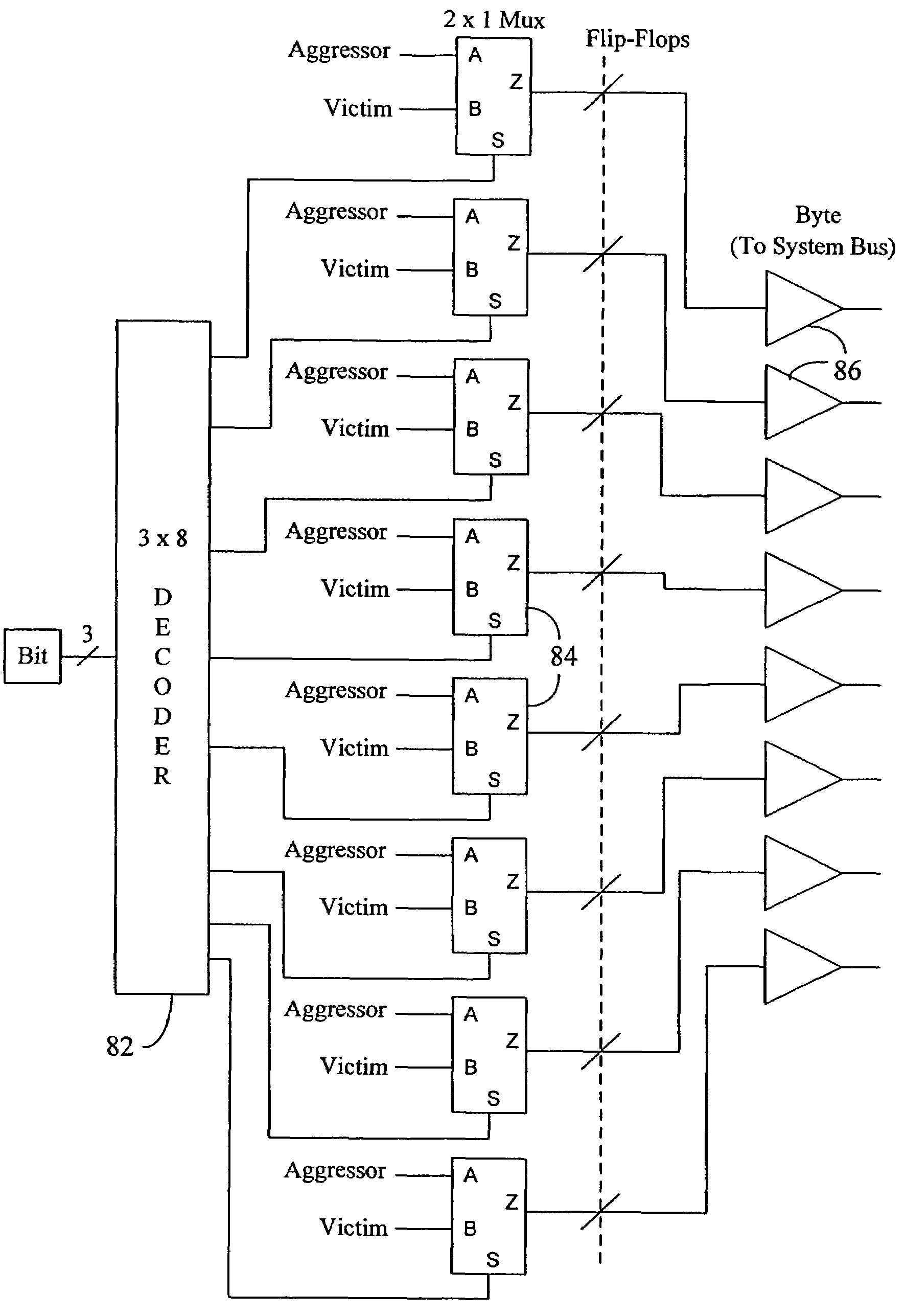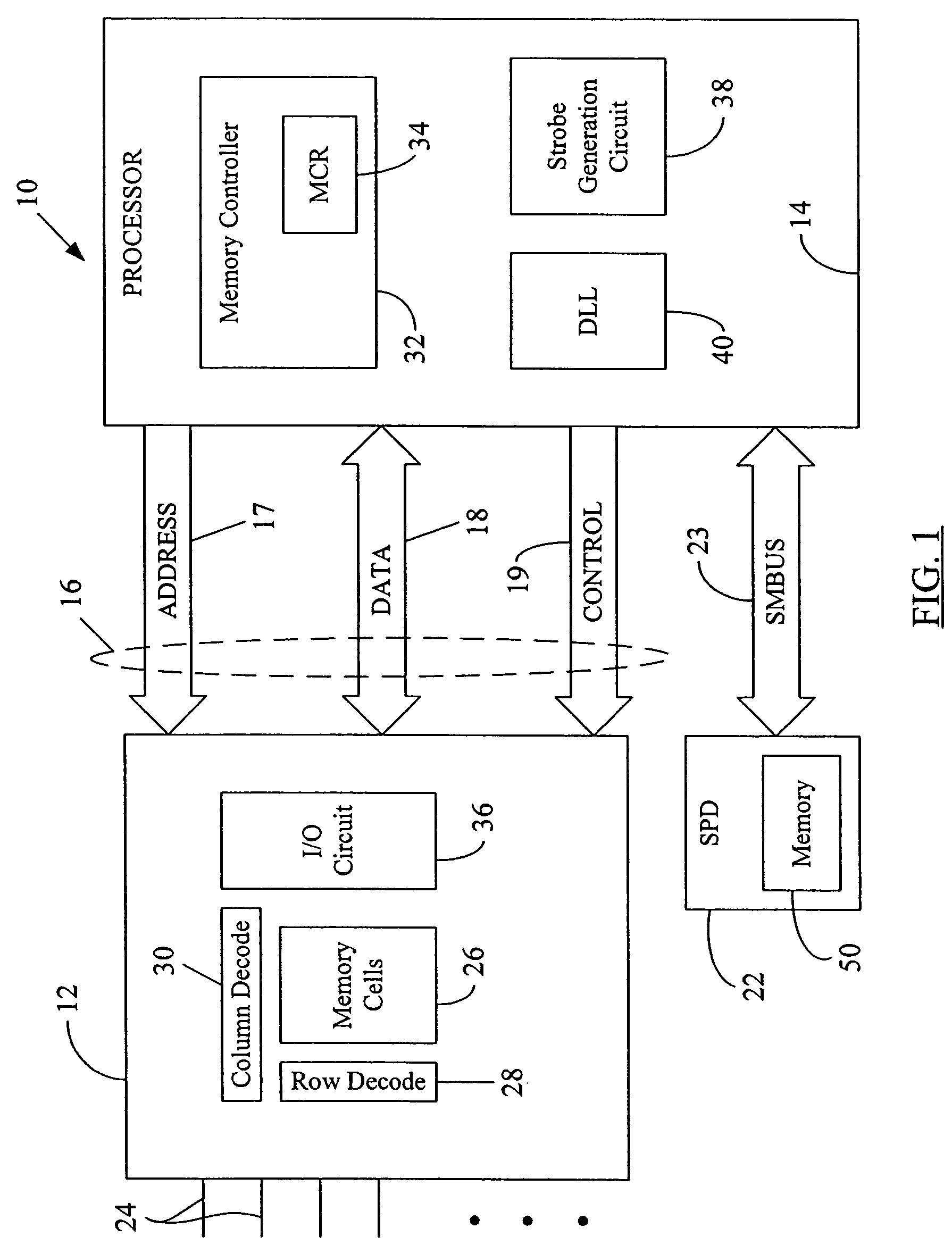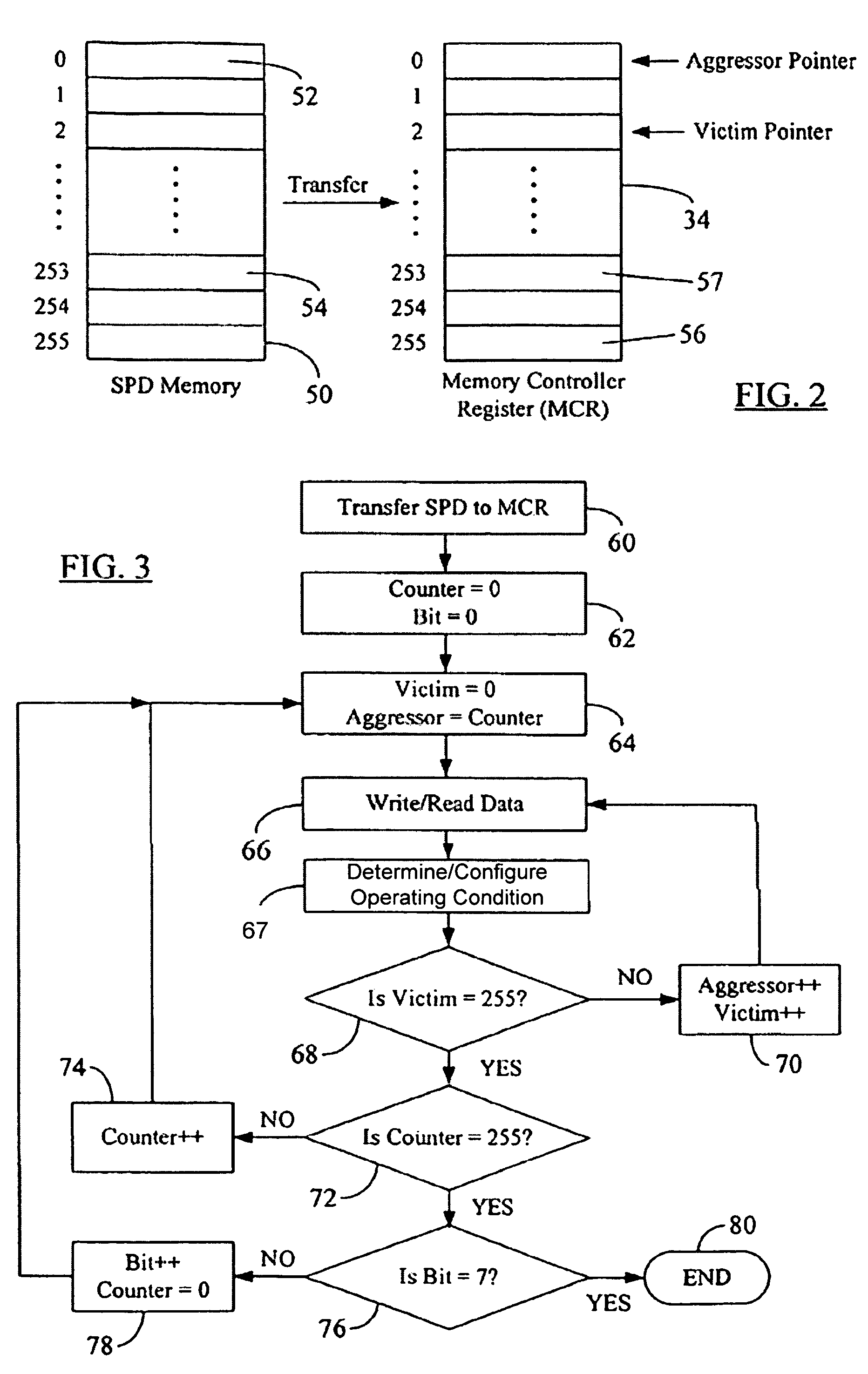Providing memory test patterns for DLL calibration
a memory test and dll technology, applied in the field of electronic memory, can solve the problems of poor representation of the bus under worst case switching conditions, limited and generic test patterns stored in the current dll calibration method, and the low utilization rate of the high-speed memory bus, so as to achieve the optimal delay calibration and more accurate dll calibration
- Summary
- Abstract
- Description
- Claims
- Application Information
AI Technical Summary
Benefits of technology
Problems solved by technology
Method used
Image
Examples
Embodiment Construction
[0019]Reference will now be made in detail to some embodiments of the present disclosure, examples of which are illustrated in the accompanying drawings. It is to be understood that the figures and descriptions of the present disclosure included herein illustrate and describe elements that are of particular relevance to the present disclosure, while eliminating, for the sake of clarity, other elements found in typical solid-state memories or memory-based systems. It is noted at the outset that the terms “connected”, “connecting,”“electrically connected,” etc., are used interchangeably herein to generally refer to the condition of being electrically connected.
[0020]FIG. 1 is block diagram showing an exemplary system 10 for DLL calibration including a memory chip or memory device 12 in communication with a processor 14 via a system bus 16. FIG. 1 also shows an SPD circuit 22 (described in more detail later) in communication with the processor 14 via an SMBus (System Management Bus) 23...
PUM
 Login to View More
Login to View More Abstract
Description
Claims
Application Information
 Login to View More
Login to View More - R&D
- Intellectual Property
- Life Sciences
- Materials
- Tech Scout
- Unparalleled Data Quality
- Higher Quality Content
- 60% Fewer Hallucinations
Browse by: Latest US Patents, China's latest patents, Technical Efficacy Thesaurus, Application Domain, Technology Topic, Popular Technical Reports.
© 2025 PatSnap. All rights reserved.Legal|Privacy policy|Modern Slavery Act Transparency Statement|Sitemap|About US| Contact US: help@patsnap.com



